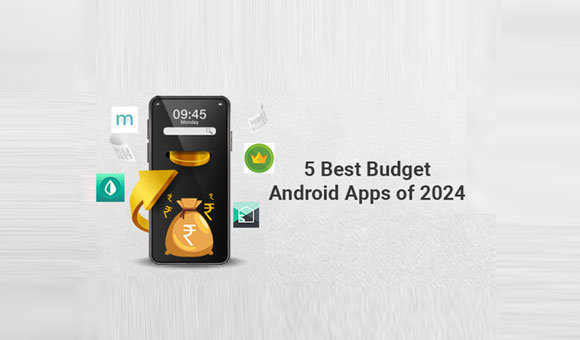6 Easy Steps to Build a Stress Free Budget
As we hit the half year mark, it is a good time to stop by for a moment and reflect back on your spending habits. So, is your budget still on track? We often track our budgets from the start. However as days pass, we tend to take it lightly and stop tracking it. Spending less than we initially commit should ideally be the most significant financial goal. This helps us to brush off excessive debts, save for emergencies and stash money away for retirement plans.
Tips for Effective and Stress-free Budgeting
For those who are habitual of over-spending, below mentioned points must be kept in mind:
1. Understand the Goal – The basic objective of a budget is to command intelligent spending. This way very less is spent & expenditures are kept under control. This is what matters the most!
2. Segregate Variable and Invariable Monthly Expenses – Put your energy to segregate variable & invariable components of the monthly spends. The fixed amount in your budget usually includes home rentals, maintenance and loan EMIs. Take steps to not default on EMI repayments as this could substantially mess up your budget in the following month. Also, pen own your monthly variables like groceries, regular doctor visits, electricity, phone bills etc. Allocate the amounts to each of these and try to curtail them if they exceed the set-out budget./p>
3. Track your Weekly Expenses – This will reveal how spending even small amounts add up over time. It will also present categories of spending that otherwise go unnoticed. Ideally, we all should track spending of a full month. Though, even a weekly dairy can provide valuable information about your spending patterns.
4. Save For a Rainy Day – Set aside a portion for emergencies, once you know the exact amount of money you need to spend each month. This sum can be extremely useful in times of crisis, so do not compromise on creating an emergency fund as a part of monthly personal budget.
5. Try the 50/20/30 Plan – Under this plan, 50% of the income goes to necessities, 20% to long term savings, and the remaining 30% to lifestyle choices. This can be a good start point if you struggle to decide how much you actually should spend on individual categories.
6. Savings First – Rather than saving at end of the month, divide the savings first and then spend the rest. This kind of strategy takes advantage of behavioral finance.
By diverging money out of your check account and putting into savings first, you are less likely to over-spend during the month. Here, it’s important to note that your budget must be scheduled in a way that you don’t have to opt Personal Loans. In case the need falls upon you, check out Home Credit Instant Personal Loans @ 0% processing fees for tenure between 12-24 months.
Also read: Financial Planning Starts from Your Home
संबंधित विषय

- Saving and Budgeting
5 Best Budget Android Apps
There are many existing Budget Apps in the country for use, so it’s best to utilize one for financial control & regulation. Let’s begin in an ascending order to list a few important Andriod Budget Apps:

- Saving and Budgeting
Is taking loans for Wedding, a Good Idea?
Ideally, they say it’s not a good idea to add a debit to your account.

- Saving and Budgeting
Financial Habits That Will Help One Get A Loan Faster
What life may hold in the future is very uncertain.

- Saving and Budgeting
Are Loan Sizes Higher When Women Borrow?
As per the numbers, the ratio of working males in India is much than women.

- Saving and Budgeting
Are Indians taking Loans to improve their lifestyle?
A recent survey reveals that about 50% Indians are open to taking Personal loans to improve their current lifestyle.

- Saving and Budgeting
Things every College Student Should Know about Finances
The time to make new friends, gain life experience, and ultimately figure out what path you want to go down.

- Saving and Budgeting
How to Achieve Financial Freedom this Independence Day?
Change is the only ‘constant’ in our fast moving & busy lives.

- Saving and Budgeting
Tackle These Financial Challenges with an Easy Mind
Financial challenges may never end for us. But what remains important is that how should we be careful regarding these challenges at the first step itself.

- Saving and Budgeting
How is Credit Better Over Cash?
Today, more and more people are relying on credit over cash for online and offline transactions.

- Saving and Budgeting
Tips to manage your savings
Most of us think we can’t save. Well saving does seem like a daunting task in lieu of the rising cost of living , but all of this makes it even more necessary to start saving from today to secure those incidental future needs.

- Saving and Budgeting
How Does Inflation Affect Personal Loans in India?
In the dynamic landscape of personal finance, various economic factors play a crucial role in shaping borrowing trends and interest rates.

- Saving and Budgeting
Benefits of Small Business Loans in Mumbai
There are many options available for fulfilling your business’s financial needs.

- Saving and Budgeting
Is It Possible to Take a Home Loan with a Low Credit Score?
Purchasing a home is a significant milestone for many families in India.

- Saving and Budgeting
Personal Loans V/S Credit Card Loans
Demand for a personal loan is always on fire.

- Saving and Budgeting
How to Apply for Small Business Loan in Lucknow?
Do it as the Lucknowi Nawabs do! They like to live larger than life, meaning a grand stature of living.

- Saving and Budgeting
How Personal Loans Can Help Women in India?
India, with its rich cultural heritage and diverse population, is a nation on the move.

- Saving and Budgeting
Set Your Financial Couple Goals on This Valentine’s Day
Your wedding day is a momentous occasion that marks the beginning of a new chapter in your life.

- Saving and Budgeting
How Can A Home Credit Personal Loan Be Used For A Grand Wedding?
Your wedding day is a momentous occasion that marks the beginning of a new chapter in your life.

- Saving and Budgeting
How Can Instant Personal Loan Help Your Urgent Needs?
Major expenses can strike at any time, so do not allow them to deplete your savings.

- Saving and Budgeting
How Can A Personal Loan Help You Avoid Financial Crunch
While there are many ways to manage your finances, sometimes unexpected expenses can put you in a financial crunch.

- Saving and Budgeting
How Can Instant Personal Loans Come Handy For Emergency Expenses?
In life, unforeseen circumstances have a habit of knocking on our doors when we least expect them.

- Saving and Budgeting
Kick Start Your Financial Year With These Mantras
Who wouldn’t like to be rich and successful in life? We have all had dreams about doing something big and earning a lot of money in our future.

- Saving and Budgeting
How To Save Money with a Personal Loan EMI Calculator?
Whether it’s for funding your dream vacation, managing unexpected medical expenses, or consolidating existing debts, a personal loan can be a lifesaver.

- Saving and Budgeting
Reasons to Take a Personal Loan to Cover Your Holiday Expenses
Holiday season is one of the most exciting times of the year, but it can also be expensive.

- Saving and Budgeting
Reduce Your Financial Burden with Long-Term Personal Loan
Managing finances can be a challenging task, especially when unexpected expenses arise or when you’re striving to achieve significant life goals.

- Saving and Budgeting
5 Reason to consider while lending money to friends
As humans, you like to approach and seek money from friends or family first, however they may or may not like your act of borrowing.


